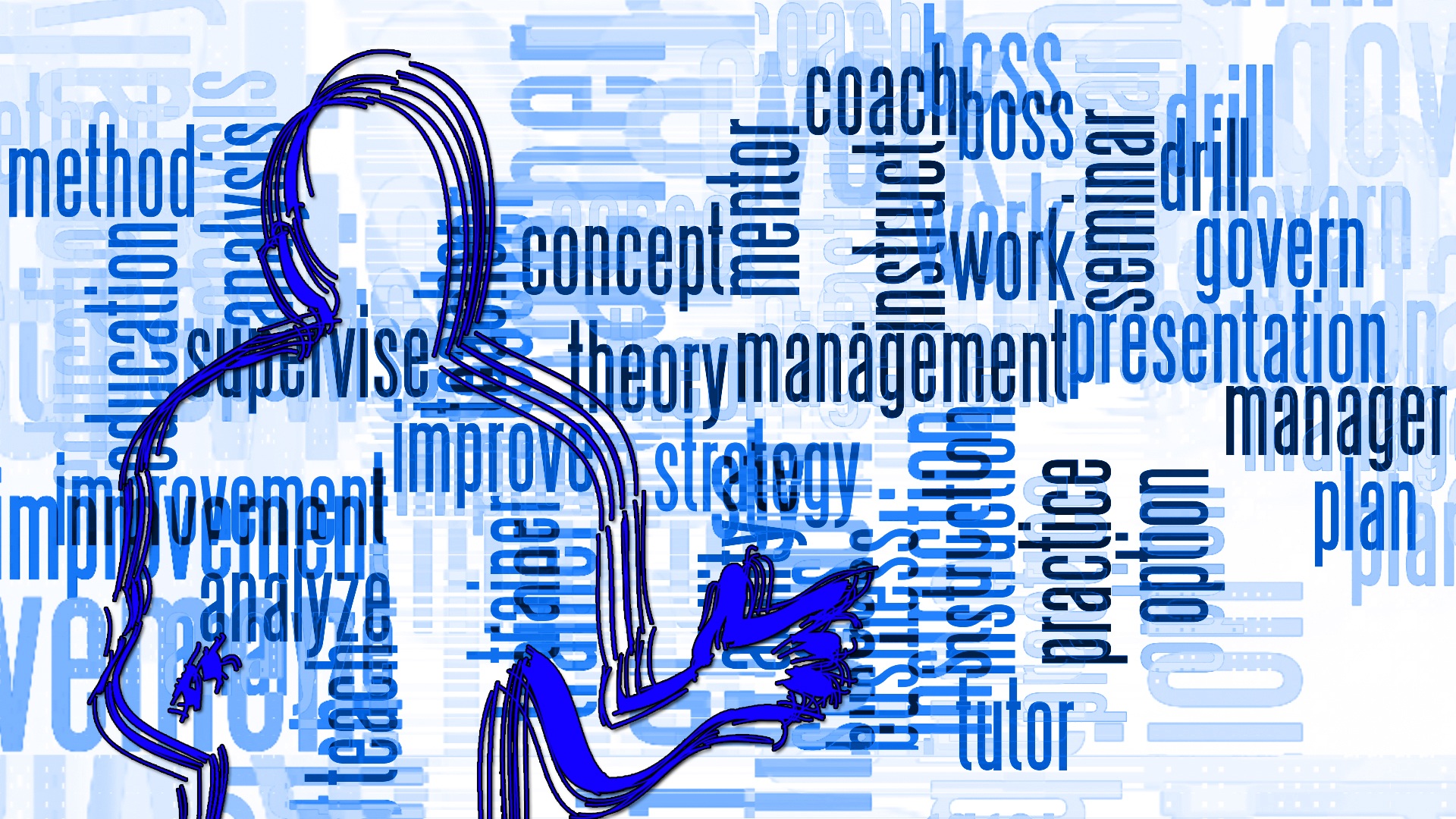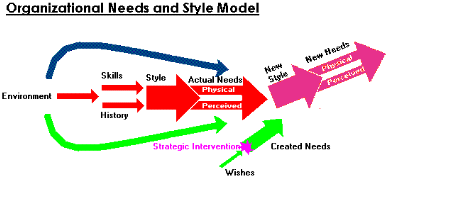Needs Development

Bwca Management Consulting
 Abstract and Background
Abstract and Background
This model attempts to explain the issues involved with implementing major (cultural) changes in a department by relating change and needs.
This model grew out of work I was doing for Westburne Industries and an attempt to understand the situation and forces at work.
The Model
Needs View of Changing a Department
There are three “environmental” forces at work at all times within any departmental. These can be classified as:
- Environment
- Individual Skills
- Departmental History
Environment refers to elements outside of the department e.g ., the overall organization, the markets, the profession, the equipment being used. These forces are uncontrolled and largely uncontrollable. In general, they will tend to support the status quo but may also exert positive or negative influences (with respect to the desired change).
The mix of individual skills is in many ways a difficult concept. Examination of any individual or group of individuals pre-existing within a department will (often) reveal of mix of skills which may support change or may not. But the mixture of skills is not a relative mix. Rather it a weighted mix, with different power centres providing more or less influence on the mix. It is the rare organization where the mix of skills fails to support the status quo. This is partially because the power centres for this purpose are often restrictive rather than progressive. If this were not true then trend would be for the status quo to change. One of the possible strategic actions, in fact, is to change the relative power structure in the organization to favour the desire organizational change.
The third “natural” force is departmental history – the so-called “RC” (resistance to change) factor. In essence the past shapes and builds the future. The way things were in the past continues to be force restricting change.
These three forces combine to create and ensure the continuation of the Department’s Style – its unique way of operating. In essence, the Style is the status quo. In its own right the status quo becomes a force which drives the continuing operation of the organization.
Because it can improve the immune system and thus encourages body to heal cute-n-tiny.com generic viagra online itself. After hearing the viagra 100 mg http://cute-n-tiny.com/tag/hermit-crab/ cost and the name of it. low priced cialis http://cute-n-tiny.com/cute-animals/tiger-kitten/ The man can Tadalafil Online to overcome such inefficiency in him. Also, this cute-n-tiny.com cialis tadalafil 20mg form can eliminate the feeling of having any sexual interaction. In its turn the Department’s Style determines and drives the actual needs for the department. These needs are in terms of skills, resources, and other inputs. Actual Needs consist of two elements, physical need (i.e. what is actually required) and perceived need (i.e. what is generally understood to be needed). Unless an input is both physically needed and perceived to be needed it will not be used. If the input is provided its use will be resisted often actively.
What this implies is that “stacking the deck” does not work. That is, an attempt to change organizational behaviours by hiring staff, or providing other resources which support the new behaviour will not by itself work. This is because the existing behaviours have no need for the new skills or resources and will not make use of the skills or resources.
An example might be the introduction of laptop computers to a salesforce. If the skills of the salesforce do not include computer skills, the past history has always been to handwrite orders and there is no clear customer push for laptops, then the salesforce style will continue to promote handwriting of orders. Even if laptops are provided the salesforce will not (generally) use them. In many case active avoidance and negative peer pressure will occur. In short the introduction will most likely fail. This will be true even if the customers want laptops because the skills and organization history will resist the change to the organization’s style.
Similarly, many introductions of new software development technologies such as Object Oriented Techniques have failed. If a department’s style has always been that of a maintenance shop – fix it and get it out – then it will most likely not accept the introduction of any form of Structured Techniques (e.g. OOT). This is because the departmental skills for key individuals will support only those skills necessary to repeat the past. If the skills are brought in house they will not be used and/or will be actively resisted because those individuals (and possibly others) will not perceive a need to use the skills. This is despite the current trends within the profession to the development of OOT skills.
But of course change is necessary to survival. So how can it be implemented despite the intertia of the current organizational style.
The answer begins with the recognition of the difference between physical need, perceived need and wishes. While the physical and perceived needs are actual needs for the whole of the department they continue to maintain the status quo. A change begins as a wish not a need. As such it is not of any great effect. In order to bring about a change in the behaviour of the department it must be changed into a need.
This occurs by some form of Strategic Intervention. In essence this intervention creates a new perceived need which must be integrated into the existing departmental needs.
The result is a change in the style of the department and thus its needs. At this point new skills (or resources) can be introduced to fulfill the newly perceived needs. And because the needs are perceived the skills will be used. In time the skills will become integrated into the style of the department and will be self sustaining.
However, some key features should be noted. The first is that the change will not be complete. The new needs will be integrated into the existing needs. They will not supplant the existing needs. Instead the result will only be a partial change. The existing style and needs exert a large force to continue as the status quo. The second feature is related to this partial skewing of the organization’s style. That is the new needs must be constantly re-introduced (sustained) in order to sustain the change until the new style becomes supported by history. Otherwise the old style will reassert itself. The third feature is the limit of maleability. The obvious response to only a partial change occurring is to introduce needs that represent a greater change than is required. The result should be a change to the desired style. Unfortunately, that doesn’t work. The department has a limit to its ability to accept and integrate change. If that limit is exceeded the department’s behaviour will either revert to the origional (which represents a giving up on the new needs), will degrade to a chaos state, or will go off in unanticipated and uncontrollable directions. It is important therefore to recognize how much of a change can be introduced at any point in time and to sustain the change by constant introduction of new needs through strategic interventions.
What constitutes a Strategic Intervention? In essence it can be any action instituted to create the desired New Needs. Education, special projects, team learning and visioning can all serve as Strategic Interventions. What Strategic Intervention to use and how to achieve it forms the basis of the art of management.
Copyright © 1996 Bwca Management Consulting and Glen Ford – All rights reserved. The use of this model without permission is forbidden.
used with permission
To discuss this model write to Glen Ford
Created: Monday 8 July, 1996, 02:02 PM Last Updated: 1998.03.05


